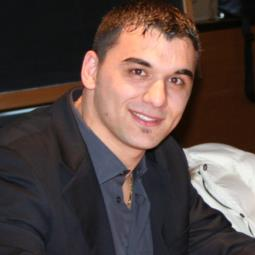Innovative Systems and Metodolgies for Monitoring and Valorization of Cultural Heritage
A special issue of Heritage (ISSN 2571-9408).
Deadline for manuscript submissions: closed (31 May 2024) | Viewed by 7583
Special Issue Editors
Interests: building technology; geomatics; remote sensing; monitoring
Special Issues, Collections and Topics in MDPI journals
Interests: geographic information systems; geoprocessing; remote sensing; UAV; digital twin; GNSS systems; predictive models; laser scanner; 3D models
Special Issues, Collections and Topics in MDPI journals
Special Issue Information
Dear Colleagues,
Cultural, social and economic territorial development is strictly connected with Cultural Heritage. Italy has the world's most extensive cultural heritage: museums, churches, archaeological areas and historical houses.
As Known, Cultural heritage represents the community’s history and identity, highlighting its traditions, art and culture, preserving its memories, customs and legacy. Moreover, It can be used as a pedagogical tool to teach the history, culture and traditions of a community, and is often a tourist attraction, generating income and economic development for local communities. It is also a source of wealth for future generations and must therefore be preserved for their legacy. In summary, cultural heritage is an important part of our common heritage and a fundamental factor in understanding the history and identity of a community. Its preservation and enhancement are crucial to preserve our past and promoting intercultural understanding.
In this regard, it is essential that cultural heritage is properly and fully detected, monitored and properly disseminated. To this end, the use of modern survey methodologies, innovative monitoring techniques and high-performance systems dissemination requires ever-wider interdisciplinary contributions.
Innovative systems for survey, monitoring and enhancing cultural heritage require the use of various and different advanced technologies, that allow greater accessibility, greater understanding and direct involvement of the public, even helping to identify dangers to the public and implement measures to preserve it.
On the other hand, the enhancement of cultural heritage includes activities such as tourism promotion, the creation of thematic routes, the production of publications and the organization of cultural events. These activities help to raise awareness and promote cultural heritage, making it more accessible and meaningful for the community, also using apps and different information technologies.
We are pleased to invite and encourage you to submit your contributions.
This Special Issue aims to collect original research articles and reviews on innovative research dedicated to methodologies, applications and case studies on cultural heritage management and preservation and on surveying/monitoring/valorization/enhancement interventions.
In this Special Issue, original research articles and reviews are welcome. Research areas may include (but are not limited to) the following:
- Photogrammetry and laser scanning methodologies for 3D modeling;
- Low-cost technologies for 3D data acquisition of assets;
- 3D modeling and machine learning for HBIM;
- 3D modeling for GIS-HBIM Integration/application
- GIS for managing and exploiting large-scale 3D data;
- Automatic or semi-automatic segmentation and classification for 3D models;
- 3D modeling monuments for structural or other FEM analysis;
- Remote Sensing Advanced techniques for CH Data Acquisition
- VR, AR, MR applications, Game 3D modeling, storytelling and other computer graphics applications;
- We look forward to receiving your contributions.
Dr. Antonino Fotia
Dr. Vincenzo Barrile
Guest Editors
Manuscript Submission Information
Manuscripts should be submitted online at www.mdpi.com by registering and logging in to this website. Once you are registered, click here to go to the submission form. Manuscripts can be submitted until the deadline. All submissions that pass pre-check are peer-reviewed. Accepted papers will be published continuously in the journal (as soon as accepted) and will be listed together on the special issue website. Research articles, review articles as well as short communications are invited. For planned papers, a title and short abstract (about 100 words) can be sent to the Editorial Office for announcement on this website.
Submitted manuscripts should not have been published previously, nor be under consideration for publication elsewhere (except conference proceedings papers). All manuscripts are thoroughly refereed through a single-blind peer-review process. A guide for authors and other relevant information for submission of manuscripts is available on the Instructions for Authors page. Heritage is an international peer-reviewed open access monthly journal published by MDPI.
Please visit the Instructions for Authors page before submitting a manuscript. The Article Processing Charge (APC) for publication in this open access journal is 1600 CHF (Swiss Francs). Submitted papers should be well formatted and use good English. Authors may use MDPI's English editing service prior to publication or during author revisions.
Keywords
- geomatics
- UAV
- BIM
- AR
- VR
- GIS
- cultural heritage
Benefits of Publishing in a Special Issue
- Ease of navigation: Grouping papers by topic helps scholars navigate broad scope journals more efficiently.
- Greater discoverability: Special Issues support the reach and impact of scientific research. Articles in Special Issues are more discoverable and cited more frequently.
- Expansion of research network: Special Issues facilitate connections among authors, fostering scientific collaborations.
- External promotion: Articles in Special Issues are often promoted through the journal's social media, increasing their visibility.
- e-Book format: Special Issues with more than 10 articles can be published as dedicated e-books, ensuring wide and rapid dissemination.
Further information on MDPI's Special Issue policies can be found here.






